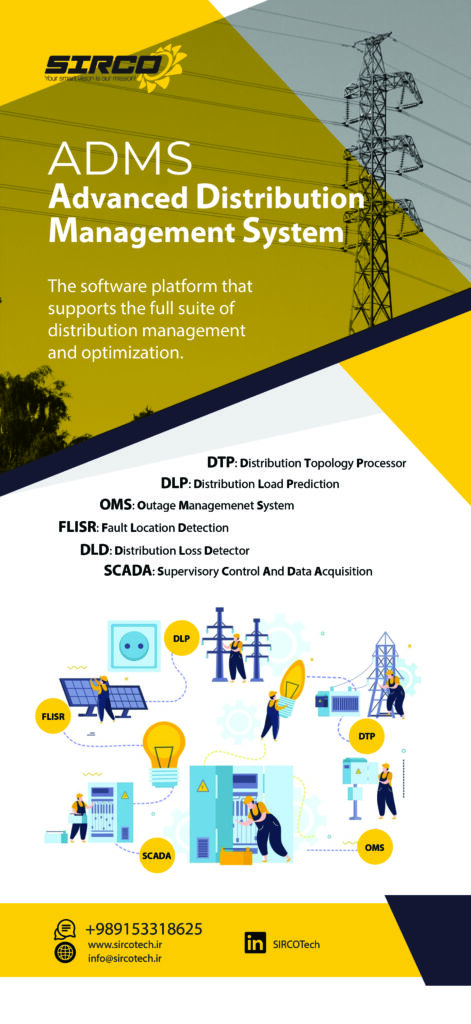The electricity grid, as implemented today, does not merely consist of large scale power plants and massive high-voltage transmission lines. The medium and low-voltage lines of the electric distribution system cover the most distance and deliver power to almost every home and business. This is what is known as a distribution network.
As is the case, the sheer number of consumers is the main contributing fact to the importance of distribution networks. However, it may come as a surprise that utilities have very little visibility into their distribution systems in general. This is most surprising, given that this is the era of sensors, smart devices and apps. Most systems still rely on breakers to disconnect the lines in the event of a fault, customers to call in to report an outage, and line crews to find the effected circuit and restore power.
The stage, however, is set for real change. Utilities are more and more keen on implementing Advanced Distribution Management Systems (ADMS), a software platform that integrates numerous utility systems and provides automated outage restoration and optimization of distribution grid performance. ADMS functions can include:
- automated fault location, isolation, and service restoration (FLISR);
- conservation voltage reduction;
- peak demand management;
- volt/volt-ampere reactive (volt/VAR) optimization;
- outage management system (OMS);
- supervisory control and data acquisition (SCADA);
In effect, an ADMS transitions utilities from paperwork, manual processes, and isolated software systems to systems with real-time and near-real-time data, automated processes, and integrated systems.
The electricity grid, as implemented today, does not merely consist of large scale power plants and massive high-voltage transmission lines. The medium and low-voltage lines of the electric distribution system cover the most distance and deliver power to almost every home and business. This is what is known as a distribution network.
As is the case, the sheer number of consumers is the main contributing fact to the importance of distribution networks. However, it may come as a surprise that utilities have very little visibility into their distribution systems in general. This is most surprising, given that this is the era of sensors, smart devices and apps. Most systems still rely on breakers to disconnect the lines in the event of a fault, customers to call in to report an outage, and line crews to find the effected circuit and restore power.
The stage, however, is set for real change. Utilities are more and more keen on implementing Advanced Distribution Management Systems (ADMS), a software platform that integrates numerous utility systems and provides automated outage restoration and optimization of distribution grid performance. ADMS functions can include:
- automated fault location, isolation, and service restoration (FLISR);
- conservation voltage reduction;
- peak demand management;
- volt/volt-ampere reactive (volt/VAR) optimization;
- outage management system (OMS);
- supervisory control and data acquisition (SCADA);
In effect, an ADMS transitions utilities from paperwork, manual processes, and isolated software systems to systems with real-time and near-real-time data, automated processes, and integrated systems.
Relation to renewable energies
Utilities that are pioneering ADMS are investing in this technology because they believe the capabilities it enables are essential to the future of their business.
Given that renewables are forming a significant portion of energy produced, ADMS must be able to monitor and manage these resources. This would become more apparent in situations where distributed renewable energy systems (like solar panels on roof tops, etc) are contributing to the grid, or when electric vehicles are taking energy from the grid.
Why PAHBAR ADMS
PAHBAR ADMS is a suite of software modules aimed at monitoring and decision making for electricity distribution systems. It is developed based on IEC 61968 standard, and covers many of the critical functions of ADMS, like FLISR and OMS.
PAHBAR is currently deployed in three regional electricity distribution companies, each of which provides services to at least one million customers. Providing reliability and insight into the system, predictability and operational consistency, and innovation and constant development, as well as lower cost and higher customization compared to existing systems are the main distinct features of PAHBAR ADMS.
